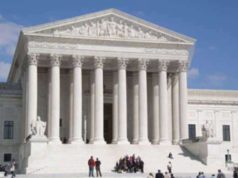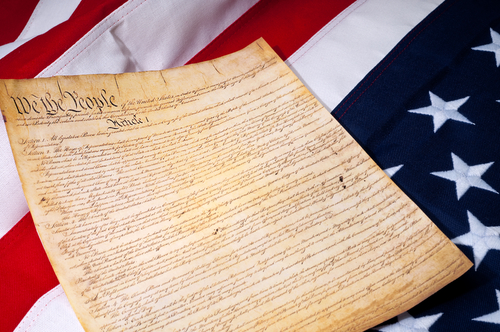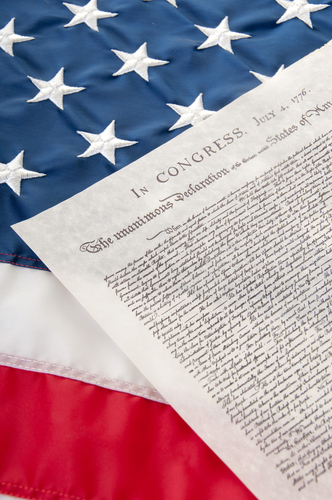The First Ten Amendments: Safeguarding Freedom and Liberty
Introduction
The first ten amendments to the United States Constitution, commonly known as the Bill of Rights, form the bedrock of American civil liberties and individual freedoms. These amendments, ratified in 1791, were a response to concerns about federal government overreach and were designed to protect the rights of American citizens. In this article, we will delve into the first ten amendments, explore their historical context, and simplify their key provisions. Let’s embark on a journey through the Bill of Rights to understand how these amendments continue to shape the American experience.
The Historical Context
To truly appreciate the significance of the first ten amendments, it’s crucial to understand the historical backdrop against which they were adopted. In the late 18th century, following the American Revolution and the establishment of the United States as a nation, there was a prevailing fear among the Founding Fathers about the potential for an overly powerful central government. This fear was rooted in their experience under British rule, where the British government had been accused of violating the colonists’ rights.
The Bill of Rights emerged as a compromise between Federalists, who supported a strong federal government, and Anti-Federalists, who were concerned about the concentration of power and the potential for government abuse. Led by James Madison, the Federalists agreed to support the addition of a Bill of Rights to the Constitution to address these concerns.
The First Amendment: Freedom of Speech, Religion, and Assembly
The First Amendment, often regarded as the cornerstone of the Bill of Rights, protects several fundamental rights:
- Freedom of Speech: This amendment guarantees that Congress shall make no law abridging the freedom of speech. It allows individuals to express their opinions and ideas without fear of government censorship, with certain limitations such as incitement to violence or obscenity.
- Freedom of Religion: The First Amendment also prevents the establishment of an official state religion and ensures that individuals can practice their faith freely. It protects both the freedom to exercise religion and the freedom from government interference in religious matters.
- Freedom of the Press: This clause safeguards the independence of the press, ensuring that journalists can report on government activities without censorship or reprisals.
- Right to Assemble Peaceably: Citizens have the right to gather and protest peacefully, allowing for the expression of grievances and advocacy for social and political change.
The Second Amendment: The Right to Bear Arms
The Second Amendment addresses the right to bear arms:
“A well-regulated Militia, being necessary to the security of a free State, the right of the people to keep and bear Arms, shall not be infringed.”
This amendment recognizes the importance of an armed citizenry in safeguarding against tyranny and protecting individual and collective freedoms.
The Third Amendment: Quartering of Soldiers
The Third Amendment, though less frequently discussed, reflects a specific historical concern:
“No Soldier shall, in time of peace, be quartered in any house without the consent of the Owner, nor in time of war, but in a manner to be prescribed by law.”
This amendment arose from grievances related to the Quartering Acts imposed by the British government on the American colonies, ensuring that the government cannot force citizens to house and support soldiers without their consent.
The Fourth Amendment: Protection Against Unreasonable Searches and Seizures
The Fourth Amendment is essential in preserving privacy and security:
“The right of the people to be secure in their persons, houses, papers, and effects, against unreasonable searches and seizures, shall not be violated, and no Warrants shall issue, but upon probable cause, supported by Oath or affirmation, and particularly describing the place to be searched, and the persons or things to be seized.”
This amendment establishes that law enforcement must obtain a warrant based on probable cause before conducting a search and seizure. It safeguards individuals from arbitrary intrusion into their private lives.
The Fifth Amendment: Protection of Rights to Life, Liberty, and Property
The Fifth Amendment encompasses a range of rights and protections:
- Grand Jury Indictment: This provision ensures that serious criminal charges can only proceed to trial after a grand jury indictment, protecting individuals from baseless accusations.
- Double Jeopardy: The Fifth Amendment prevents individuals from being tried twice for the same offense, safeguarding against government harassment through repeated trials.
- Self-Incrimination: It protects against self-incrimination, asserting that no one can be compelled to be a witness against themselves in a criminal case.
- Due Process: The amendment guarantees that no person can be deprived of life, liberty, or property without due process of law, ensuring fair legal proceedings.
- Eminent Domain: It restricts the government’s ability to take private property for public use, requiring just compensation for property owners.
The Sixth Amendment: Right to a Fair Trial
The Sixth Amendment focuses on ensuring a fair and speedy trial:
“In all criminal prosecutions, the accused shall enjoy the right to a speedy and public trial, by an impartial jury of the State and district wherein the crime shall have been committed, which district shall have been previously ascertained by law, and to be informed of the nature and cause of the accusation; to be confronted with the witnesses against him; to have compulsory process for obtaining witnesses in his favor, and to have the Assistance of Counsel for his defense.”
This amendment guarantees crucial rights for individuals accused of crimes, including the right to legal representation and the right to confront their accusers.
The Seventh Amendment: Right to a Jury Trial in Civil Cases
The Seventh Amendment extends the right to a jury trial to civil cases:
“In Suits at common law, where the value in controversy shall exceed twenty dollars, the right of trial by jury shall be preserved, and no fact tried by a jury, shall be otherwise re-examined in any Court of the United States, than according to the rules of the common law.”
This amendment underscores the importance of citizen participation in determining civil matters.
The Eighth Amendment: Protection Against Cruel and Unusual Punishment
The Eighth Amendment safeguards against excessive bail, fines, and cruel and unusual punishment:
“Excessive bail shall not be required, nor excessive fines imposed, nor cruel and unusual punishments inflicted.”
This amendment ensures that penalties for crimes are proportionate and humane, preventing the government from imposing unduly harsh or degrading punishments.
The Ninth Amendment: Protection of Unenumerated Rights
The Ninth Amendment asserts that the Bill of Rights does not exhaust the rights of the people:
“The enumeration in the Constitution, of certain rights, shall not be construed to deny or disparage others retained by the people.”
This amendment recognizes that individuals possess rights beyond those explicitly listed in the Constitution, emphasizing the broad scope of personal liberties.
The Tenth Amendment: Reserved Powers of the States
The Tenth Amendment addresses the division of powers between the federal government and the states:
“The powers not delegated to the United States by the Constitution, nor prohibited by it to the States, are reserved to the States respectively, or to the people.”
This amendment emphasizes that any powers not specifically granted to the federal government remain with the states or the people. It reinforces the concept of federalism, where states retain a significant degree of autonomy.
Conclusion
The first ten amendments, the Bill of Rights, are a testament to the Founding Fathers’ commitment to safeguarding individual liberties and protecting against government overreach. These amendments have stood the test of time, serving as a foundation for the principles of justice, freedom, and equality in the United States. As citizens, it is essential
The first ten amendments to the United States Constitution are collectively known as the Bill of Rights. These amendments were added to the Constitution in 1791 in order to protect individual liberties and limit the power of the federal government. Each of the first ten amendments has its own distinct purpose, and together they form a comprehensive guide to individual rights under the U.S. Constitution.
Here is a quick guide to the first ten amendments:
1. The First Amendment: The First Amendment protects freedom of religion, freedom of speech, freedom of the press, freedom of assembly, and the right to petition the government. This amendment is often regarded as one of the most important in the Bill of Rights, as it protects a wide range of individual liberties.
2. The Second Amendment: The Second Amendment protects the right to bear arms. It has been the subject of much controversy in recent years, as supporters of gun control argue that the amendment should be interpreted more narrowly than it has been historically.
3. The Third Amendment: The Third Amendment prohibits the government from quartering soldiers in private homes during peacetime without the owner’s consent. This amendment was added specifically to address concerns about the British practice of quartering soldiers in colonists’ homes prior to the American Revolution.
4. The Fourth Amendment: The Fourth Amendment protects citizens against unreasonable searches and seizures by the government. This amendment requires that law enforcement officials obtain a warrant before conducting a search, and that the warrant be based on probable cause.
5. The Fifth Amendment: The Fifth Amendment protects citizens against self-incrimination and double jeopardy. It also requires that the government provide due process before depriving a citizen of life, liberty, or property.
6. The Sixth Amendment: The Sixth Amendment guarantees the right to a speedy and public trial, by an impartial jury. It also guarantees the right to be informed of the charges against you, the right to confront witnesses against you, and the right to have legal counsel.
7. The Seventh Amendment: The Seventh Amendment guarantees the right to a trial by jury in civil cases. This amendment is often overlooked, but it is an important protection against the power of the government and the wealthy.
8. The Eighth Amendment: The Eighth Amendment prohibits excessive bail and fines, as well as cruel and unusual punishment. This amendment is intended to protect citizens from government overreach and ensure that punishments are proportionate to the crime.
9. The Ninth Amendment: The Ninth Amendment is often cited as one of the most important in the Bill of Rights. It states that the rights listed in the Constitution are not the only rights that citizens possess. This amendment is intended to protect individual liberties that are not specifically mentioned elsewhere in the Constitution.
10. The Tenth Amendment: The Tenth Amendment is perhaps the most contentious in the Bill of Rights. It states that powers not explicitly granted to the federal government by the Constitution are reserved for the states or the people. This amendment has been a battleground for debates over states’ rights and federal power throughout American history.
In conclusion, the first ten amendments to the United States Constitution provide a comprehensive guide to individual liberties and the limits of government power. Each amendment serves a distinct purpose, and together they form a powerful tool for protecting the rights of citizens. Understanding the Bill of Rights is crucial for recognizing and defending individual liberties in the United States.
The first ten Amendments to the U.S. Constitution are more commonly referred to as the Bill of Rights. These ten Amendments were introduced to the American Congress in 1789. The purpose of these 10 Amendments is to protect the individuals of the United States–protect their rights to property, their natural rights as individuals, and limit the Government’s power over the citizens.
The ten Amendments that were originally placed into the Constitution were ratified in 1791 through the process of state voting and ratifying them one by one using a three-fourths majority vote of all the states. This was an important movement because it illustrated the way in which the founders had structured the Constitution, making them amendable while still requiring that sufficient time be given to the process in order to make the right choices regarding citizenship.
The first ten Amendments of the U.S. Constitution are ones many individuals are taught when they are kids, but forget as they grow older. Simply stated, these 10 Amendments are:
1. Freedom of speech, religion, press, etc.
2. Right to keep and bear arms.
3. The conditions for quartering soldiers.
4. Right of search and seizure.
5. Provisions regarding the prosecution of an individual.
6. Right to a speedy trial.
7. Right to trial by jury.
8. Provision against excessive bail and cruel punishment before trial.
9. Rule of construction regarding the constitution; and
10. The rights of the states under the Constitution.


























